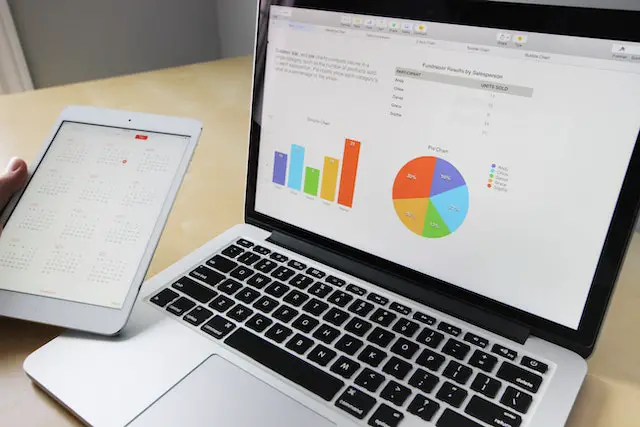Taxonomy is a fundamental part of modern life. It’s used to classify organisms, organize information and even structure our thoughts. If you want to understand why is taxonomy important, here are 17 reasons why it’s important: from its role in managing data to how it helps us make sense of the world around us.
Taxonomy is essential for understanding the complexity of our ever-evolving environment, organizing knowledge and making informed decisions. So let’s dive into these 17 important reasons why taxonomy should be taken seriously.
17 Benefits of Taxonomy
Taxonomy is a key tool for organizing and managing data. It helps us to classify and group like things together, making it easier to search, sort and retrieve information. This allows us to make better decisions based on more accurate data. Following are 17 benefits of taxonomy.
1. Taxonomy Improves searchability
Taxonomy enables more accurate and efficient searches. By organizing data into standardized categories, users can quickly find the information they need without having to manually browse through a lot of irrelevant content. This is one of the biggest advantages of having taxonomy in place.
By using a hierarchical structure based on specific criteria and criteria sets, users can easily navigate their way around large amounts of information to find exactly what they’re looking for.

2. Taxonomy Enhances Data Quality
Taxonomy ensures that data is properly categorized and classified in a logical manner, improving the accuracy and consistency of data across systems. This helps to ensure that users get the most up-to-date information possible.
The taxonomy also helps to identify trends and patterns in the data, providing valuable insights to be used in decision-making. It can also be used to identify and eliminate errors in data entry.
3. Taxonomy Facilitates Data Sharing
Taxonomy makes it easier to share information across different platforms. By having a standardized way of organizing data, it’s easier for users from different systems to understand the same data.
Taxonomy is an essential tool for collaborations between organizations, businesses and individuals alike.
With a standardized way of organizing data, multinationals can easily share pertinent information across multiple platforms without worry that the data may be misinterpreted or misunderstood. It makes collaboration much smoother, as everyone is working from the same set of data and is able to draw accurate conclusions.
4. It Improves Data Visualization
Taxonomy is also valuable for data visualization, as it makes it easier to create meaningful visualizations of large sets of data.
By using a hierarchical structure, users can quickly understand the relationships between different pieces of data and gain insights into trends and patterns that would be difficult to identify without them.
Taxonomy is a great way to make sense of large amounts of data, whether it be for business intelligence or research purposes. It enables users to identify similarities and differences between different pieces of data quickly and efficiently.

5. It Enhances the User Experience
By making the user experience more intuitive and efficient, taxonomy can help create a better overall user experience.
By organizing data into categories, users can more easily find the information they need without having to manually browse through an overwhelming amount of irrelevant content. This makes it easier for them to make informed decisions and take appropriate actions based on the data.
6. Taxonomy Improves Accessibility
The taxonomy also enables users to access data from different platforms and sources more easily. By having a universal standard for organizing data, users can quickly find the information they need without needing to learn multiple different systems and processes.
This makes data more accessible and easier to use, which is critical for organizations that rely on accurate and timely data for decision-making.
7. Taxonomy Increases Efficiency
Taxonomy reduces the amount of time and effort it takes to locate and consume data, as users can quickly find what they need without having to manually search or browse through a lot of irrelevant content. This makes it easier for them to stay up-to-date on the latest developments in their field and to quickly access the information they need.
It also helps minimize errors, as users can easily double-check their data against the taxonomy to ensure accuracy. This increases efficiency and reduces costs for organizations that rely on accurate data to make informed decisions.
8. Taxonomy Improves Data Security
Taxonomy helps to ensure that sensitive information is properly categorized and secured. By assigning specific categories or criteria sets to certain kinds of data, it’s easier to keep track of who has access to what information, making it harder for unauthorized users to gain access to sensitive data.
It also helps ensure that only the right people have access to certain kinds of data, which is essential for any organization dealing with confidential or proprietary information. Taxonomy thus provides an extra layer of security when it comes to protecting vital data.
9. It Facilitates Data Analysis
Taxonomies help to structure and organize data, making it much easier to analyze complex sets of information. By breaking down large amounts of data into categories and subcategories, it becomes much simpler to identify trends and patterns, as well as to draw meaningful conclusions from the data.
This is especially helpful in fields where understanding large sets of complex data is essential, such as economics or finance. Taxonomy helps to make sense of the data and facilitates more accurate and comprehensive analysis.

10. It Facilitates categorization
Taxonomy simplifies how we organize data by providing structured labels that identify similar items or concepts.
Taxonomy helps us to quickly categorize and group things together, making it easier to identify similarities and differences between various pieces of data.
By assigning specific categories or criteria sets to certain kinds of data, it becomes much simpler to find the information needed without having to manually search or browse through a lot of irrelevant content. This reduces time and effort and makes data more accessible.
11. It enhances content retrieval
Taxonomy can be an invaluable tool for improving user experience, accessibility and efficiency. It helps to categorize data into meaningful categories that make it easier for users to find the information they need without needing to manually search or browse through a lot of irrelevant content.
Additionally, taxonomy provides better security by assigning specific criteria sets which ensure only authorized personnel to have access to sensitive data while also allowing more accurate analysis as well as enhanced retrieval capabilities.
12. Taxonomy Streamlines navigation
Taxonomy can be an incredibly useful tool for improving the usability of websites and applications. Utilizing a structured system of labels that identify similar items or concepts makes it much easier to navigate complex information structures.
It is especially true in fields where understanding large sets of complex data is essential, such as economics or finance. Taxonomy helps to make sense of the data and facilitates more intuitive navigation.
Additionally, taxonomy-based navigation systems can greatly improve overall user experience by making it easier to find relevant content and reducing the time needed to do so. This increases efficiency, reduces costs and makes it simpler for organizations to stay up-to-date on the latest developments in their respective fields.
By leveraging the power of taxonomy, organizations can gain a multitude of benefits that range from improved data security to enhanced content retrieval and more intuitive navigation.
13. Taxonomy Facilitates decision-making
Taxonomy can be used to improve decision-making by providing a consistent structure for analyzing data and making informed decisions.
By categorizing data into meaningful categories, it is much easier to identify patterns, draw conclusions from the data, and gain insights that might not have been noticed before. As these structured labels can be applied to any type of data, organizations can gain valuable insights from their data that can help guide their decision-making processes.
Furthermore, taxonomies allow for better collaboration among teams as everyone is able to understand the same set of labels and categories, which helps speed up decision-making and increase efficiency.
14. Taxonomy Enhances collaboration
Taxonomy promotes collaboration by providing a common language for teams to communicate ideas and information across different disciplines. This helps to bridge the gap between various stakeholders, allowing them to share their knowledge and insights with one another.
The taxonomy also enables teams to quickly find and retrieve information that is relevant to their work, which can help to improve productivity and reduce costs.
Additionally, it ensures each team member is on the same page when it comes to an understanding their data and allows for faster decision-making processes since everyone is speaking the same language.

15. It Supports interoperability
Taxonomy is an incredibly powerful tool for ensuring interoperability between different systems. Providing a consistent way of classifying and sharing data, it allows different systems to “talk” to each other in a much more efficient manner.
It helps to reduce the complexity and cost associated with developing and maintaining multiple systems while also improving the speed of data exchange.
The taxonomy also allows for a more consistent user experience as it ensures all users have access to the same information regardless of which system they are using. This can help organizations stay ahead of the curve when it comes to technology and gives them a competitive edge in their respective industries.
16. Taxonomy Enhances metadata
Taxonomy can greatly improve the accuracy of metadata by providing a consistent and organized way of defining and organizing data. By taking advantage of well-defined labels and categories, it can help to structure data more effectively, which makes it easier to access and share relevant information.
Furthermore, taxonomy-based systems can make sure that metadata is accurate, up-to-date, and consistent across different systems. This helps to improve the reliability of the data, making it more reliable for decision-making and ensuring teams have access to accurate information when they need it.
17. Taxonomy Promotes creativity
Taxonomy encourages creativity by providing a structured framework for exploring new ideas and discovering unexpected relationships between different concepts. This is because, with the use of taxonomy, ideas can be categorized and organized in a way that allows for quick and easy access to related topics.
Providing users with a comprehensive understanding of the subject matter allows them to explore different avenues and come up with creative solutions for their problems.
Conclusion
In conclusion, taxonomy is an essential tool for managing data and organizing information. It helps us to quickly find, sort and retrieve data more efficiently, enabling us to make better decisions based on accurate data.
The taxonomy also promotes knowledge sharing, facilitates collaboration, and encourages creativity. Ultimately, it is an invaluable tool for businesses looking to improve their efficiency and increase their competitive advantage.